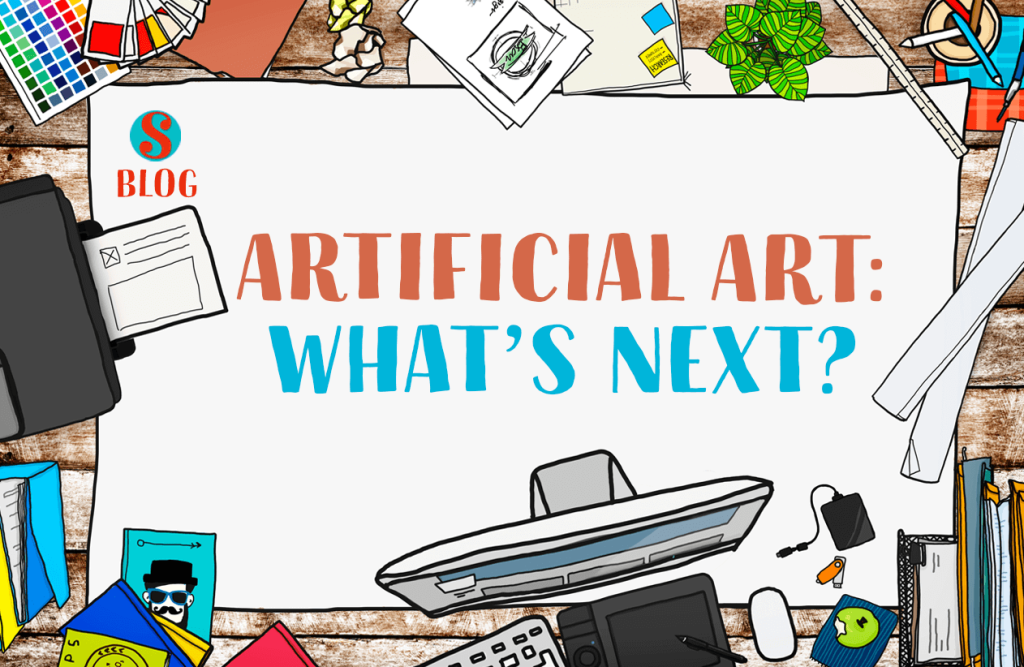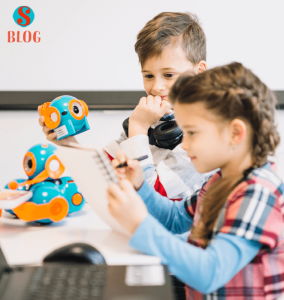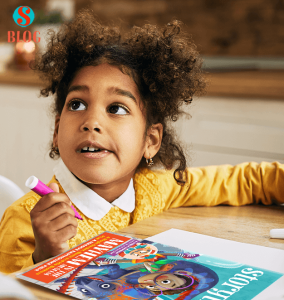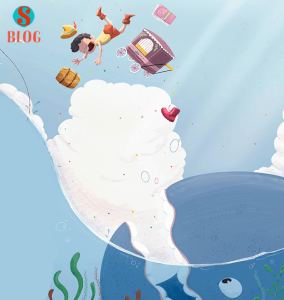Have you ever wondered how Storytime is made? How does the creative work happen behind the scenes? In this blog, we will talk about how we craft every issue and how the magic really happens!
First, our team selects submitted tales, researches stories from the past, and writes and edits the text. We discuss how we will tell each tale, what we will leave out, and what new ideas we will add. Then, when the stories are ready, we send them off to someone who adds their own indefinable magic: the artist!
Over the last eight years, we have worked with literally hundreds of talented artists from around the world. They each bring their own style and imagination to the stories they illustrate. It’s always a thrill to see what they have added to the story – they often come up with visual ideas that enrich the tale far beyond what was written in the text.
Storytime combines words and pictures to tell stories. We think that’s the most powerful combination there is! Writers and artists have teamed up to craft vivid tales for hundreds of years – but could technology make this kind of partnership obsolete?
Artificial intelligence has been used for quite some time now in many sectors. Technology can be good at solving old problems in new and efficient ways. But where do we draw the line? You might have read recent articles about a new development which some fear might take over artists’ jobs!
To put it in simple terms, ‘AI art’ programmes like Midjourney and DALL-E 2 can conjure up pictures in seconds. If you type in a description of what you want, an algorithm (complex mathematical formula) will create an image to order. You even can ask it to create a picture in a certain style or mimic the technique of a particular artist!
These algorithms work by analysing a huge database of art and then create patchwork pictures based on the millions of images they have digested. But what they create is hardly something new or original – they just combine bits of existing art in new combinations and often the result is a vaguely familiar image.
Where do Midjourney and DALL-E 2 get the art that they analyse? It is ‘scraped’ (gathered) from the internet and multiple sources of data. It is common for artists to see bits and pieces of their pictures in AI-created digital images. Nobody asks permission to use their work in this way, nor they get any payment or credit. While the creators of this software claim that it is intended as a tool that ‘enhances and extends the creative process’, many people disagree and there is a huge debate going on right now.
As it stands, it can be tempting for some to use AI created art in magazines and media. It is far quicker and cheaper, for starters! But the reason we thought we would talk about our creative process this month is because, while we have kept an eye on these debates and new technologies, we believe that creativity and human input are an integral part of Storytime. Thus, we so not think that an AI could ever replace our creative team, writers and illustrators.
We believe that art and stories are all about communication – human beings sharing their ideas and experiences and adding to a narrative. Stories are about characters, the things they feel, the things they do, and why they do them. That is why they draw us in! Even in fairy tales, myths or science fiction, we can connect with the characters and empathise with them. It’s more than just a formula, it’s the imperfection and uniqueness that make them unforgettable.
The artists in our magazine are an integral part of our storytelling process. We discuss stories and their meanings with them, and the illustrators lovingly add compositions, poses and facial expressions, rendered in their own unique colour palettes and add so many details to every scene that you feel there is another story happening in the background of every illustration you see! They always add something of themselves to the art. We love to spot these things – and young readers do too! (For example, one artist added a sword from her favourite video game to the background of a giant’s lair!) It is their skill, empathy and imagination that breathe life into pictures of characters and the worlds they inhabit.
You could get an AI art app to create a picture of ‘wooden puppet boy in fish stomach fairy tale’ to illustrate a tale about Pinocchio, say. The art might ‘look OK’ – but an AI wouldn’t be able to use imagination and emotion to add drama and feeling to the image and perhaps understand why Pinocchio ended up in the fish’s stomach! It would feel flat. Only an artist that reads and understands the themes and emotions in a story can do that.
We are so grateful to the hundreds of talented illustrators who have brought their magic to Storytime with pencil, brush or drawing tablet. You all help us to tell our stories in unpredictable and extraordinary ways that an AI never could. We also hope this wonderful world of original art and storytelling we have created will continue to be exciting and thrilling to the thousands of readers around the planet who chose to join us! Technology will continue to improve our lives, fill up some of the functions in society, speed up research and bring a lot of good to the world – but it shall never replace human creativity!
Image credits: rawpixel.com and Drazen Zigic








